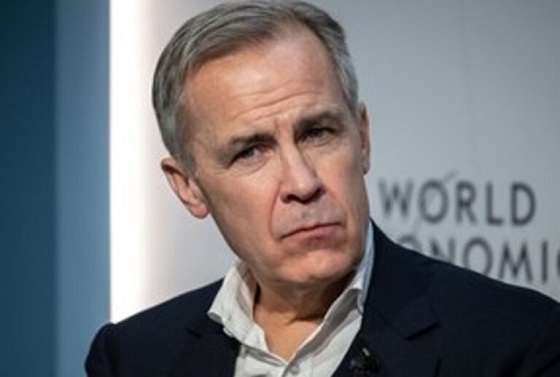Bruce Dowbiggin
Think U.S. Hockey Model Works Best? Guess Again
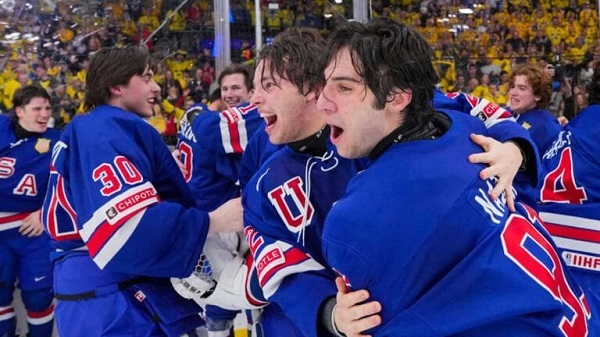
Canadians are still lamenting the pasting Team Canada absorbed at the World Junior Championships in Ottawa, won by the USA. Out of the medals, beaten by Latvia and Cechia, among others. There’s talk about the ongoing problems of the development system and the people at Hockey Canada.
Yes, Canada’s top eligible players (Macklin Celibrini, Connor Bedard) are in the NHL and unavailable to the team. And the massive feeder system— prospects spread out over the CHL, Junior A and NCAA— is inefficient at best. But the talent window is definitely narrowing.
As we wrote in August of 2021, “The hockey pipeline is full of young men whose fathers could give them a hockey education but who also knew many of right people to tap into. The sophisticated training and arduous diet regimes are getting more like Tom Brady and less like Gump Worsley. And they’re expensive— even in Howe’s home nation of Canada which honours its roots.”
What might be of interest is that people in the development system of American hockey are similarly distressed about the problems of developing players in their country. Cost, bureaucracy and the sheer time commitment for families is breaking a lot of people. “This discipline and access is reflected in the United States where the boom in hockey participation is resulting not in farm boys and rink rats but in privileged sons and daughters of highly paid NHL stars getting an inside track on making the league or the Olympics.”
Topher Scott of The Hockey Think tank.com has posted about what he sees in American hockey culture. “I’ve talked to so many people in youth hockey about how to change the toxic culture – and it’s tough hearing so many good people saying they can’t do it the way they want (the right way) because everyone else is doing it the other way (the business way) and if they don’t do it that way they’ll lose their club.
I’m calling BS. If you are involved in youth hockey, please listen to this clip. And if you are a person of influence wherever you are at, stand tall and don’t cater to the crazy. The only way we’ll see positive change is if people of influence in youth hockey areas, who know better, go against the grain and lead the change.”
The comments on his post are familiar in the burgeoning hockey system that now has roots in most states in the U.S. “Such a scam to charge these families 5/6k in dues per year and then pay another 10/20/30k in travel expenses.”
—“It’s an arms race and you are not going to stop that. Make it fun for the other 90% of kids and families that aren’t part of the arms race.”
—“This system beyond broken. Organizations telling some kids In the contract we have the right to put you on the lower team, as we may find other players to replace you, along w/ we are flying players in to play.”
—“U14 has kids who live in central USA playing on east coast teams. Nj pa and ny loaded w aaa programs, many refuse to play each other because of rankings”.
—“…the hockey culture DOES not like disruptors- they are a THREAT to exposing bad things & bad people. Loss of power, control, money & damaging adult egos trumps what is best for kids.”
—“I find it unbelievable that travel hockey programs demand kids miss Fri and Monday school days to play wraparound weekend tournaments 5X/yr or risk being thrown off the team. Its gotta stop!”
Scott and his X followers are describing the same issues affecting hockey in Canada where a number of financial and social changes have created a system dominated by clubs, agents, schools and ambitious parents. The image he presents of the overbearing parent— in concert with team officials— who are stage managing a child’s progress is familiar. One that dictates needing to take out a mortgage to create a young hockey star.

As we have written recently, the NCAA decision to now allow players with service in the CHL to play at the U.S. college level has accelerated the meat grinder of development hockey in Canada. Again, delusional parents are now demanding that their child have extra ice time and a prime spot on a team so as to qualify for a pro career. Adding to the pressure is the NIL program now radically restructuring college sports in the U.S. After winning the rights to name, likeness and image in the U.S. Supreme Court athletes can now be paid millions in some cases to attend a certain school or transfer through the “portal” system,.
While NIL has not hit hockey as dramatically as other sports, it’s just a matter of time till schools wanting the next Connor Bedard to attend their school will be tossing alumni and sponsor money to over-18 prodigies. Parents seeing this will re-double efforts at the minor level to get their child on the prospect track, paying vast amounts for training and travel.

One problem in Canada, as mentioned, is the vast network of teams demanding players on the men’s side. For prospects to star on the first line or in goal there must be others to play on the third line or be a seventh defenceman. This creates a meat grinder. While clubs sometimes level with parents about ice time there are plenty who are in denial, hoping their son or daughter can still cash in on the riches in the NHL from the fringes of the roster.
Some of this has been alleviated by scholarships for players depending on their years in the system. Canadian University hockey is full of 22-26 year olds using their CHL grants to pursue education. But there are many who simply melt away to play in minor pro leagues across the country and in Europe.
In the long run this may make the CHL an elite league for under 18 players or those who can’t manage the scholastic record to switch to NCAA. The NHL likes the longer CHL schedule with its pro model, but there is much to be said for a prospect growing at an academic institution, broadening their horizons.
But, as always, parents will follow the money and the dream— even if they’re unattainable.
Bruce Dowbiggin @dowbboy is the editor of Not The Public Broadcaster A two-time winner of the Gemini Award as Canada’s top television sports broadcaster. His new book Deal With It: The Trades That Stunned The NHL And Changed Hockey is now available on Amazon. Inexact Science: The Six Most Compelling Draft Years In NHL History, his previous book with his son Evan, was voted the seventh-best professional hockey book of all time by bookauthority.org. You can see all his books at brucedowbigginbooks.ca.
Bruce Dowbiggin
Long-Distance Field Goals Have Flipped The Field. Will The NFL Panic?

It is a day that lives in infamy for Buffalo Bills fans. Jan. 27, 1991, with Buffalo against the New York Giants in Super Bowl XXV. Behind 20-19 with eight seconds left, Scott Norwood, a former All-Pro, attempted a 47-yard game-winning field goal. The kick was, in the immortal words of Al Michaels, wide right.
In the days of the Bills’ four consecutive losing trips to the Super Bowl a 47-yard field goal was within the range of an All Pro kicker. Still it was considered anything but automatic. And kicks of over 50 yards were moon shots with a high degree of failure. Sixty yards? Please, don’t make us laugh.

But as anyone watching field goals in the NFL and CFL can attest the distance barrier has been shattered. NFL kickers are making 72.5 percent of field goals from at least 50 yards. Four kicks have been made from at least 60 yards — one shy of the single-season record. Tampa Bay’s Chase McLaughlin hit a 65 yarder against Philadelphia in Week 4, one yard short of Justin Tucker’s record set in 2021.
Last Sunday Evan McPherson of Baltimore hit a 67-yarder that was wiped out by a late timeout called by Green Bay’ HC Matt LaFleur. (Jacksonville Jaguars kicker Cam Little hit a 70-yard field goal, but it was in preseason and not an official record.)
What makes this onslaught more interesting is that the record for longest FG in the NFL had stood 43 years from Tom Dempsey’s game-winning 63-yarder in 1970 against Detroit for New Orleans. (Dempsey, who has no toes on his right foot wore a special kicking boot.) It took Matt Prater and the light air of Denver to establish a 64 yarder on December 8, 2013. Since then it’s been bombs away.
Dallas’ Brandon Aubrey is the current king of effortless distance, regularly pounding them through from over 60. Many expect him to break the 70-yard mark. (Airlines have movies on flights that long.) No wonder then that the NFL has set records in each of the last four seasons for 50-yard field goals. The total of 195 in 2024 was double the total from every NFL season until 2015.
The combination of distance training plus a few new rules has revolutionized game strategy in today’s game. With the so-called Dynamic kickoff rules forcing more returns, teams are regularly starting drives at the 35- or 40-yard line. In late-game situations top quarterbacks like Buffalo’s Josh Allen or Kansas City’s Patrick Mahomes need to get only a couple of first downs to get in the range of their kickers.

Now, a TD with under a minute left is not the death sentence for teams with one of the better kickers— as Bills fans will remember from their crushing loss in the AFC championship game to the Chiefs in 2022. The game featured 25 points scored in the final two minutes of regulation. The Chiefs took just 11 seconds to get to Harrison’s Butker’s range for a tying 47-yard field goal, then won in overtime.
Once the kicker played another position. Today they are specialists. The science of kicking has also improved with a plethora of kicking camps and coaches springing up to train the latest generation of long-distance drivers of the ball. With only 30 jobs in the NFL the competition is fierce, and only the very best get even a look at the pros, let alone s job. But with the money paid to a steady kicker there are thousands each year refining their craft and strengthening their techniques to get a sniff.
Another innovation improving distance was the league allowing teams to prepare their own kicking balls for games. Now they receive a supply of 60 game balls before the season to use in games. 49ers kicker Eddy Pineiro estimates the broken-in balls add maybe three or four yards to the distance on kicks. The rules stipulate that no artificial heating, stretching or inflating are allowed but Jets kicker, veteran Nick Folk, says that it gives him. Comfort zone.
“We get to kind of do just like quarterbacks get whatever they want to do to the ball, as long as it looks like a football and the logo’s still there and all that stuff,” Folk told AP. “I think they’re pretty lenient with that. It’s a very welcoming thing to be able to kind of look at a ball and be like: ‘All right, I want to kick this one this week, I want to kick this one this week.’”
In the CFL the place-kicking game is about to get a big shock as the league moves goal posts from the goal line to the back of the new, smaller end zones. Kickers will now be forced to kick much further for three points, while offences will play on a smaller field that requires more emphasis on TDs.
Paul McCallum stroked a 63-yard to set the league’s record, and like the NFL, CFL kickers are constantly pushing their range in a league with only one indoor surface. Unlike the NFL, the CFL allows PKers to use a tee. Suffice to say the reconfigured field will take getting used to. (Already traditionalists are fuming.) At least we don’t have the rouge on missed FGs to kick around any more.
For now the quest for a 70-yard field goal continues. The question will be how does the NFL react to re-balance the field’s dynamics to protect the integrity of scoring.
Bruce Dowbiggin @dowbboy is the editor of Not The Public Broadcaster A two-time winner of the Gemini Award as Canada’s top television sports broadcaster, his new book Deal With It: The Trades That Stunned The NHL And Changed hockey is now available on Amazon. Inexact Science: The Six Most Compelling Draft Years In NHL History, his previous book with his son Evan, was voted the seventh-best professional hockey book of all time by bookauthority.org . His 2004 book Money Players was voted sixth best on the same list, and is available via brucedowbigginbooks.ca.
Bruce Dowbiggin
Canada’s Humility Gene: Connor Skates But Truckers Get Buried
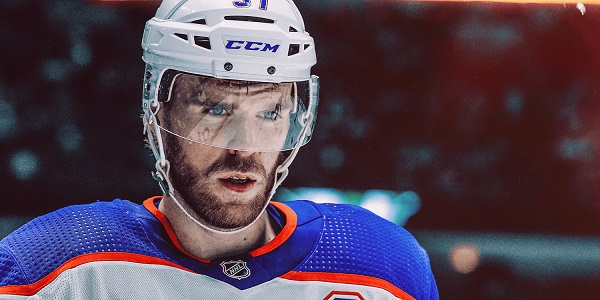
My friend and colleague Roy MacGregor used to talk about the “humility gene” in Canada’s hockey heroes. From Gordie Howe to Jean Beliveau to Wayne Gretzky it described the aw-shucks attitude of the top players in the game, who are as Canadian as Roy’s famous canoes.
The refusal to go Hollywood like the NFL, NBA or MLB stars was a defining characteristic of the hockey culture that once bound Canadians. For decades this “fear of flying high” was used by the NHL against the stars when it came to getting paid. Even when players belatedly started a union, their executive director Alan Eagleson did everything he could to suppress salaries and please his buddies in the owners’ box.
What Eagleson’s treachery didn’t accomplish the Tallest Wheat syndrome in Canada did . “You’re paid to play a child’s game. When is enough money enough? You should be grateful the owners let you wear their uniform.” For most players the fans’ withering guilt was the worst fear. In short, outsiders are not allowed to rip on Canada’s stars, but Canadians themselves are free to bring low their heroes.
In our obit for Bob Goodenow, Eagleson’s successor at the NHLPA, we described the slow, painful climb to final self determination in the 1990s. “It’s hard to understate the mentality he had to change… Goodenow convinced hockey players that to earn their worth in the market they had to stick together in negotiations.”

This is relevant this week as Canada’s star player Connor McDavid resurrected the humility gene in Edmonton. The greatest player in his generation McDavid held all the cards to negotiate a new contract with the Oilers or whomever he wanted. Everyone outside Edmonton— particularly his hometown Toronto Maple Leafs— wanted a piece of McDavid and was willing to pay a huge price for him.
As a hint at what McDavid might earn, Minnesota’s Kirill Kaprizov, who’s never won a major award or played past the first round of the playoffs, just received $136 million for eight years ($17M per year). The new CBA allows that soon the top players could earn as much as $20 M a year.
But this was humble time in a Canadian city mortified that its coolest kid was leaving. What to do? Being a self-deprecating Canadian and successor to the humility gene McDavid chose to halve the baby, taking a preposterously low $12.5 a year for two years in Edmonton while also making it obvious he’s gone should the Oil again fail to win the franchise’s sixth Stanley Cup.
It was the most Canadian solution to wanting to be a good guy for a city that, trying to being kind, isn’t Palm Beach or Brentwood. While hinting he will cash in later.
For certain the low-ball conclusion to what was to be a season of painful interviews about his future did nothing to endear McDavid to his fellow NHLPA members. Notwithstanding Kaprizov’s haul, McDavid’s cratering will put a chill on salaries for stars while putting a big smile on the face of NHL commissioner Gary Bettman. He has players back in the barn, and he has Canada to thank for it.
We saw that same Canadian herd instinct in the election when the Liberals marshalled ex-pat Mike Myers to reinforce the suppressing instinct. Exposed by Trump for their handling of their economy the past 10 years the Laurentian elite recoiled in horror, preferring the sunny fairways of self delusion over the reality of a dysfunctional nation.
The best bookend to McDavid’s humility is the concurrent legal resolution to the Truckers Convoy of 2022, a non-violent event (okay, someone pissed on the Cenotaph) that convulsed the nation for three weeks. If a Covid mask obscured your view of the circus let’s just say it was a sit-in by truckers upset with the arbitrary virus/ vaccine actions inflicted by Justin Trudeau’s government.

While Trudeau hid beneath his desk the truckers frolicked next to Parliament Hill, honking horns and playing on Bouncy Castles while the Hill’s media entertained thoughts of Lenin seizing power in 1917. The reality of the demonstration— no guns, no breaking down the doors of Parliament, no firebombing Trudeau’s residence— was lost on locals inconvenienced by long lineups at Shoppers Drug Mart. There was no mention of regime change or insurrection. Except in the eager-to-please-Justin media.
The high-profile stunt from the West clearly Irritated Woke Canada clinging to rumours of MAGA invasion (still embraced by these spares ), firebombing and CBC suggestions of Putin espionage demanded the full weight of the law for organizers Tamara Lich and Chris Barber.
So Trudeau sent in mounted police to bowl over grannies, and his justice droogs threw the book at the evil doers behind the convoy. Okay, they were charged with mischief. Remember. Not assault. Not destruction of property. Not subversive behaviour. Not overthrowing government. Not possession of weapons. All this performative justice applauded by Canada’s purchased media. Even when the OPP head of intelligence found no credible evidence of threats to national security, extremism, foreign influence (e.g., Russian or American sources, or Donald Trump), or plans for violence.
Because you can’t flaunt Canada’s Liberals and get away with it. So Lich and Barber were keel-hauled through the Canadian justice system and jails for three years. Huffy prosecutors and tendentious judges made the proceedings look like The Mikado, slapping the pair with criminal records and house arrest for not being sufficiently contrite to the Laurentian elites.
They still face civil charges from people whose bed times were upset by the truckers. And the judge hinted that they’ll be made to pay for the cost of cleaning up Wellington street after turning it into a party zone. But by God, they’ll think twice about challenging the federal liberals again.
And so, kids, our lesson? It’s okay to pretend humility in Canada. Just don’t dare get above your station.
Bruce Dowbiggin @dowbboy is the editor of Not The Public Broadcaster A two-time winner of the Gemini Award as Canada’s top television sports broadcaster, his new book Deal With It: The Trades That Stunned The NHL And Changed hockey is now available on Amazon. Inexact Science: The Six Most Compelling Draft Years In NHL History, his previous book with his son Evan, was voted the seventh-best professional hockey book of all time by bookauthority.org . His 2004 book Money Players was voted sixth best on the same list, and is available via brucedowbigginbooks.ca.
-
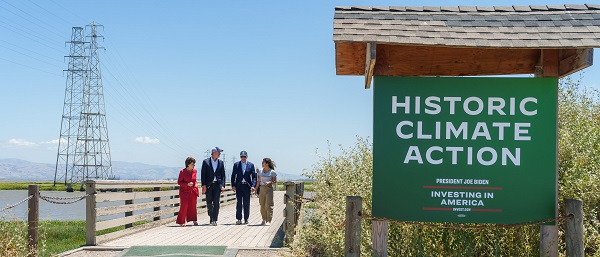
 Daily Caller1 day ago
Daily Caller1 day agoUtah Republican Senator Planning To Attend Big Globalist Climate Shindig Despite Trump’s Energy Policies
-

 Business2 days ago
Business2 days agoUN, Gates Foundation push for digital ID across 50 nations by 2028
-
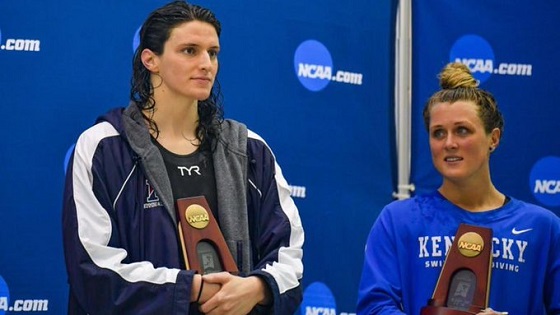
 International15 hours ago
International15 hours agoNumber of young people identifying as ‘transgender’ declines sharply: report
-

 Energy18 hours ago
Energy18 hours agoIndigenous Communities Support Pipelines, Why No One Talks About That
-
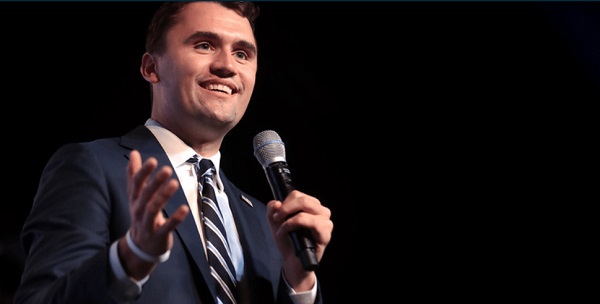
 C2C Journal2 days ago
C2C Journal2 days agoCharlie Kirk and the Fragility of Civic Peace
-

 Business2 days ago
Business2 days agoNetherlands Seizes Chinese-Owned Chipmaker in Unprecedented Security Move
-
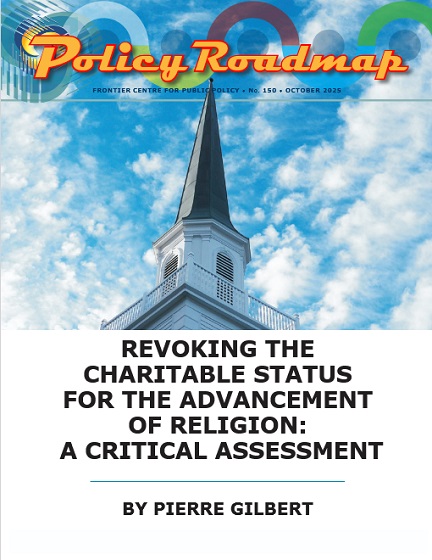
 Business18 hours ago
Business18 hours agoFinance Committee Recommendation To Revoke Charitable Status For Religion Short Sighted And Destructive
-

 Business12 hours ago
Business12 hours ago“Nation Building,” Liberal Style: We’re Fixing a Sewer, You’re Welcome, Canada


